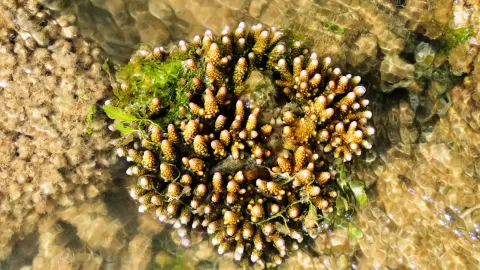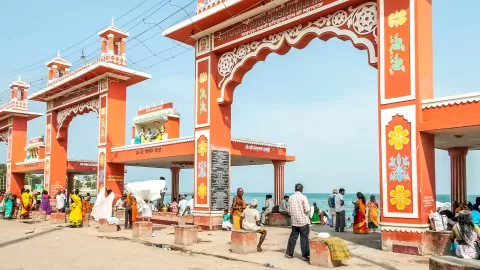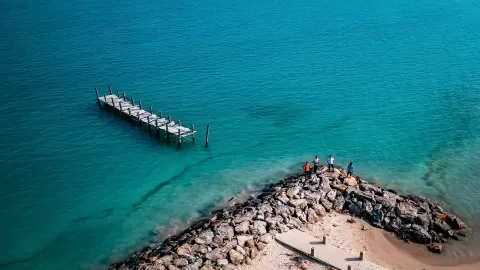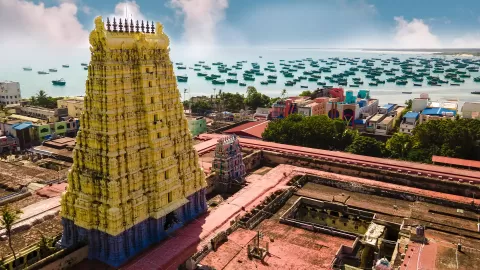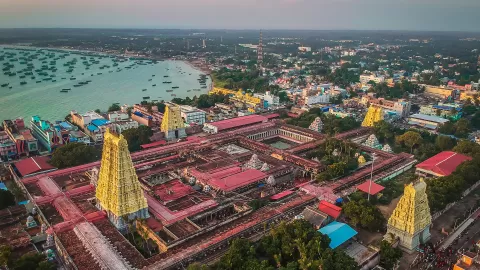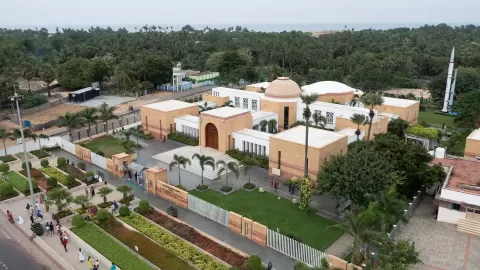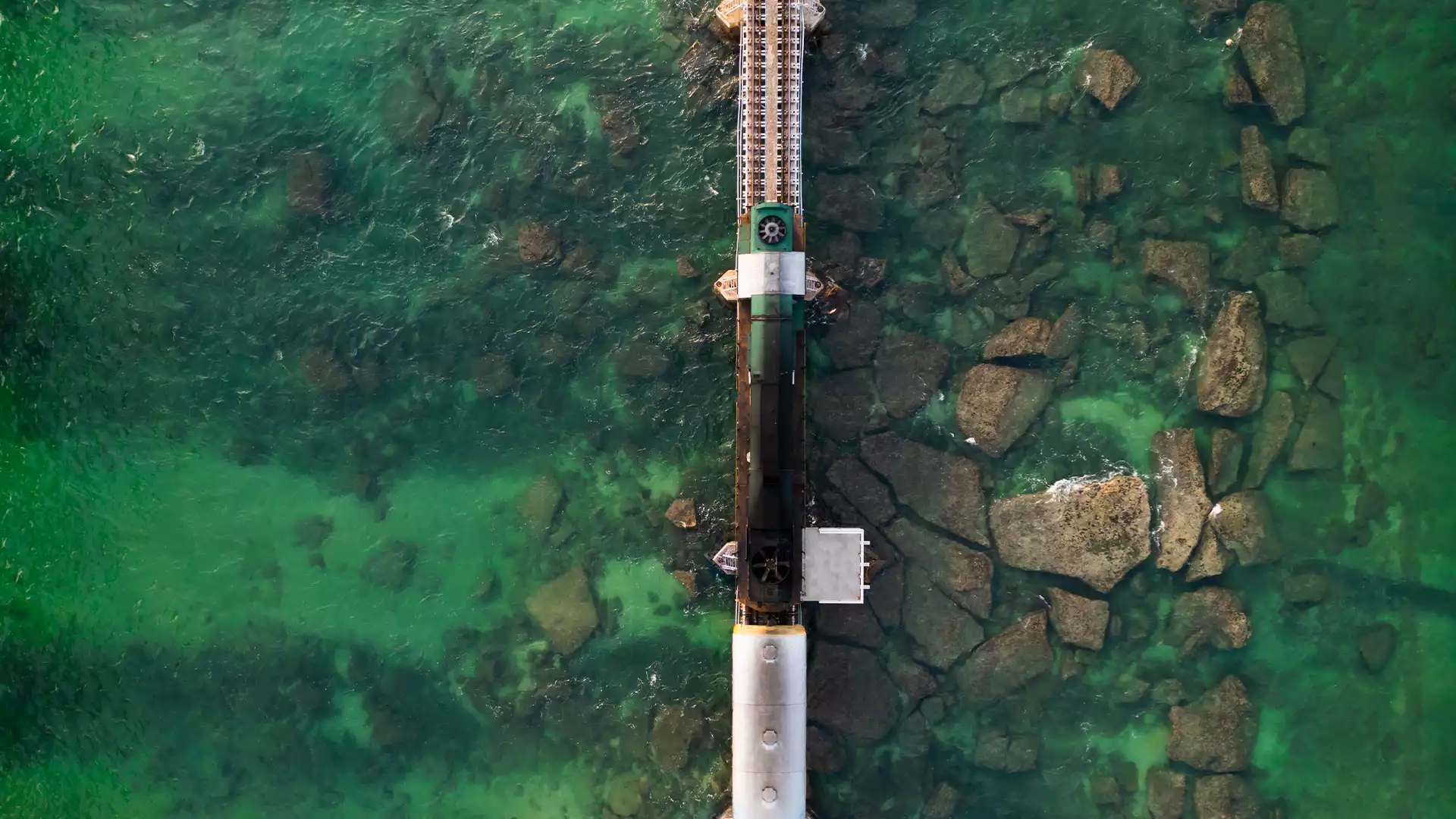Rameswaram has a vast number of pilgrims visiting its religious destinations as it is considered one of the four holy sites (Char Dham) among Hindus. One such destination that has great religious importance in Rameswaram is the Ram Sethu bridge.
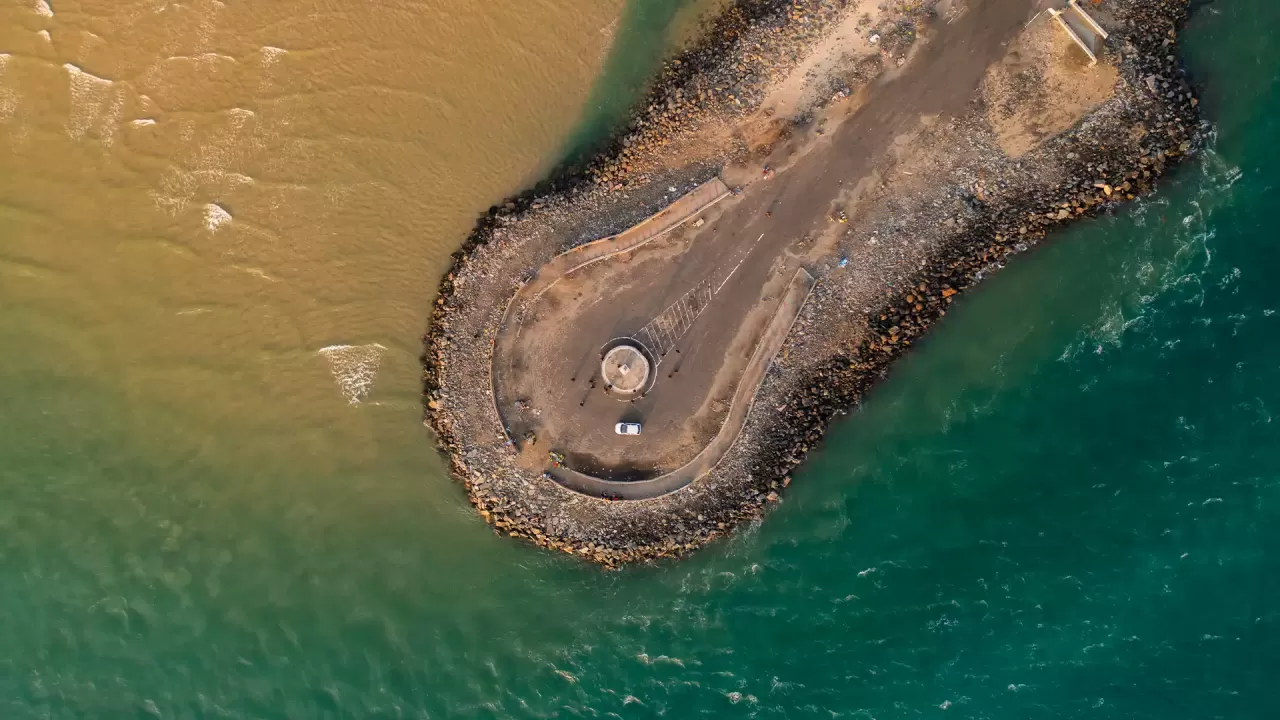
The Ram Sethu bridge, also known as Adam’s bridge, connects Rameswaram to the Mannar island of Sri Lanka. The bridge is a 48 km long chain of natural limestone shoals.
There are many fascinating mythological tales that narrate the reason for its existence. Ram Setu is mentioned in the epic Ramayana, as the bridge constructed by Lord Rama and his vanara (monkey) army. The bridge was constructed to cross over to Lanka to rescue Goddess Sita from the clutches of the demon king Ravana. In Valmiki’s Ramayana, the bridge is described as Sethubanthan.
The temple records here also seem to suggest that Adam’s bridge or Ram Sethu was completely above sea level till 1480. It was submerged in the shallow sea due to natural calamities.
As per other legends, it is also known as Adam’s bridge because according to the Bible and the Quran, the first man Adam travelled through the natural bridge to reach Adam’s peak in Sri Lanka. The name is believed to have been given by an East India Company cartographer who, after considering Abrahamic belief about the bridge, used the name Adam’s Bridge on his map.
Besides the myths, there are also compelling scientific theories that explain the existence of the structure. The Geological Survey of India (GSI) under ‘Project Rameswaram’ states that the islands of Rameswaram in India and Talaimannar in Sri Lanka were exposed between 7,000 and 18,000 years ago. By dating the corals, the survey indicates that Adam’s bridge was formed about 500 - 600 years ago
Scientists believe that the structure is a natural formation and that Adam’s bridge is a large tombolo, which is a coastal formation of sandbars that connects an island across the sea to the mainland. Another theory suggests that this structure was formerly the world’s largest tombolo that split into a chain of shoals with a change in sea levels a few thousand years ago.
Various scientific studies describe it as a chain of shoals, coral reefs, sand spit or barrier islands. But the site remains an important landmark, attracting both pilgrims and explorers.


